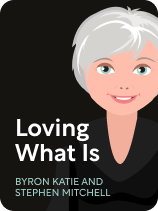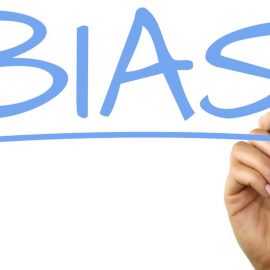

This article is an excerpt from the Shortform book guide to "Loving What Is" by Byron Katie. Shortform has the world's best summaries and analyses of books you should be reading.
Like this article? Sign up for a free trial here.
What causes emotional suffering? How do our thoughts perpetuate unnecessary emotional negativity?
According to spiritual teacher, Byron Katie, we have no real reason to feel emotional pain, regardless of what happens to us. The real cause of emotional suffering is not what happens to us, but what we think about it.
Here’s why our internal thoughts—not external experiences—lie at the root of all suffering.
Inner Turmoil Comes From Wanting Life to Be Different
Since every experience is inherently good, why is it that certain experiences cause us emotional suffering, such as sadness, anxiety, or anger? According to Katie, it’s not the experiences that make you feel pain. Rather, all your negative emotions spring from resistant thoughts that judge these experiences as wrong or unwanted.
These resistant thoughts distort the truth of reality (that it is inherently perfect) by preventing you from seeing the good in your experiences. The more resistant thoughts you think about your experiences, the more you fail to see what’s good about them. As a result, you easily find even more reasons to feel unhappy about your experiences—and this is why you feel negative emotions.
(Shortform note: If resistant thoughts make us feel so bad, why do we continue to think them? Neil Pasricha (The Happiness Equation) explains that it’s a result of evolution: To ensure survival, your ancestors had to constantly stay alert to danger. Letting their guard down made them vulnerable to predators and competitors. Though you don’t face the same risks now, your instinct to avoid danger hasn’t evolved. However, instead of protecting you from threats to your survival, this instinct now encourages you to focus on “threats” such as what you don’t have and what needs to improve.)
Examples of resistant thoughts include blaming others for not behaving in ways that you believe they should, complaining about things because you think they should be different, and worrying about all of the bad things that might happen.
(Shortform note: The tendencies that Katie refers to as examples of “resistance” can sometimes underpin a victim mentality—the belief that bad things always happen to you through no fault of your own. This victim mentality creates feelings of apathy because when you feel like external, uncontrollable factors are always trying to thwart you, you feel powerless and lack the motivation to make the best out of your situation.)
Katie clarifies why resistant thoughts lie at the root of all negative emotions by explaining how they:
- Cause you to misinterpret reality
- Convince you that reality must change before you can accept it
Let’s explore these two effects in detail.
Effect #1: Resistant Thoughts Cause You to Misinterpret Reality
Katie argues that resistant thoughts keep you mired in a world of possibilities that don’t exist: Instead of focusing your mind on what has happened or is happening, they focus your mind on what should have happened, could have happened, or might happen.
These thoughts keep you locked in an imaginary narrative that has nothing to do with reality. As a result, they cloud your judgment and prevent you from clearly perceiving, interpreting, and responding to the situation as it is.
According to Katie, the more you let your internal narrative blind you, the more you misperceive and misinterpret reality as bad. This causes you to engage in emotional reactions and behaviors that exacerbate your negative feelings and prolong your emotional suffering.
Example: It’s your birthday and your partner hasn’t yet mentioned it. You assume that she’s forgotten about you, and this upsets you. Since you’re upset, you can’t think clearly about how much she cares about you—instead, you focus on all the ways she neglects your needs. This exacerbates your negative feelings and causes you to emotionally withdraw from her. As it turns out, your partner didn’t mention your birthday because she’s planning a surprise for you—which means you don’t have a real reason to feel pained by the experience. Only your misinterpretation of her behavior, coupled with your negative internal narrative, creates and prolongs your pain.
Effect #2: Resistant Thoughts Convince You That Reality Must Change Before You Can Accept It
Katie explains that while resistant thoughts distort the truth of reality and are therefore the cause of your emotional pain, you often don’t realize this—because those very same resistant thoughts convince you that something external is to blame for your emotional discomfort. So, to seek relief from your emotional discomfort, you attempt to exert control over and change things you can’t control, such as other people or external circumstances.
However, she argues, it’s impossible to control anything that’s outside of yourself—the people and situations in your life are never going to change no matter how many resistant thoughts you think about them. Attempting to do so just fuels additional resistant thoughts (for example, “I hate this because it should be different!”) that prevent you from accepting and making the best of your circumstances.
Example: Each time your roommate leaves dirty dishes in the sink you get angry and snap at him. You believe that he’s to blame for your anger and that he must change his behavior so that you can feel better. However, no matter how angry you feel, or how often you lash out at him, he continues to leave dirty dishes in the sink. Because you don’t see the truth—that only your resistant thoughts about the dishes in the sink make you angry—you allow your negative emotions to escalate and fail to find peace with the situation.

———End of Preview———
Like what you just read? Read the rest of the world's best book summary and analysis of Byron Katie's "Loving What Is" at Shortform.
Here's what you'll find in our full Loving What Is summary:
- How to investigate resistant thoughts that trigger emotional discomfort
- A step-by-step process to release resistant thoughts
- How to accept and feel at peace with yourself and others






